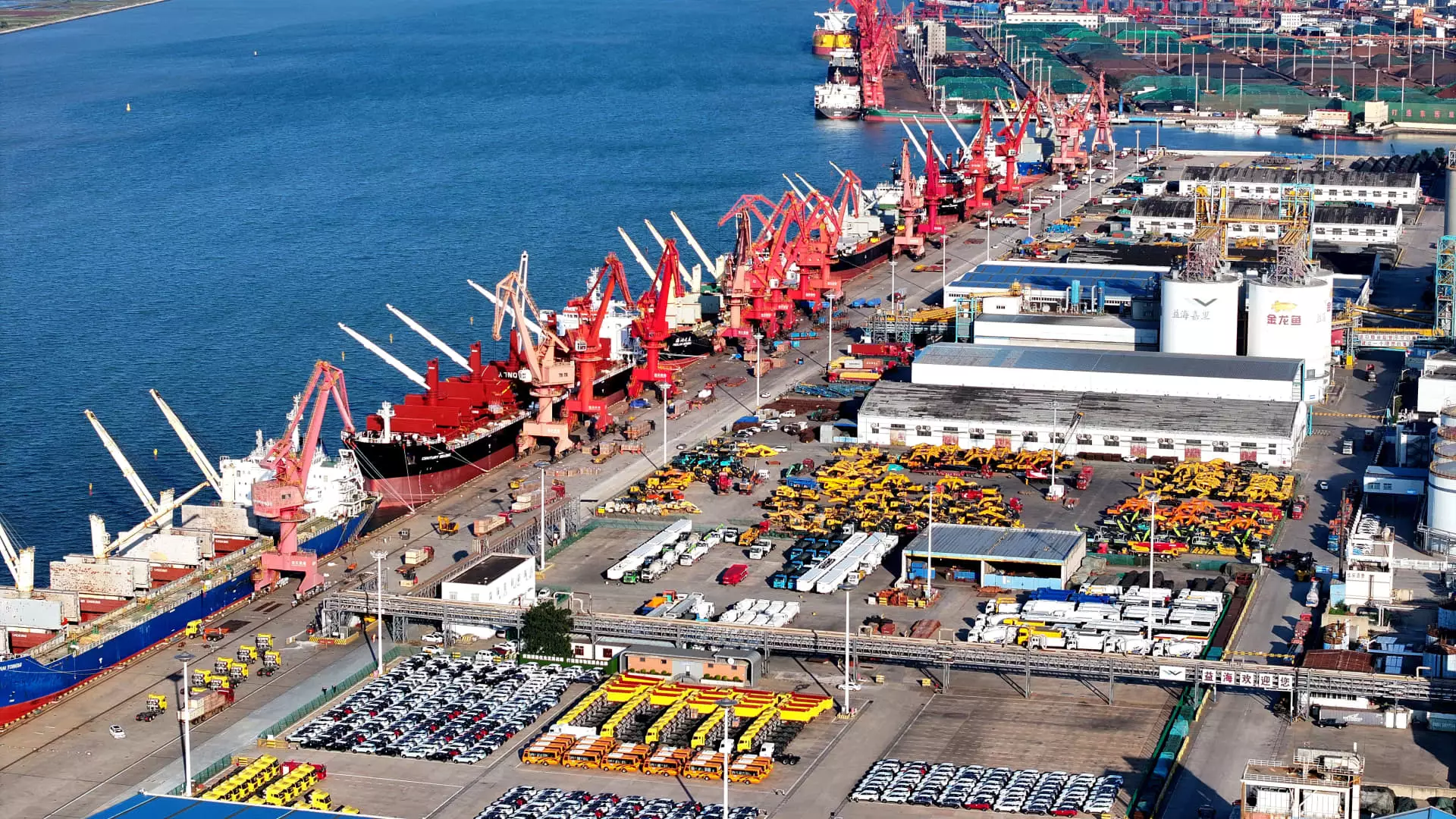China’s industrial sector continues to exhibit troubling signs of financial instability as evidenced by a 10% downturn in corporate profits for October year-on-year. This notable decline is the latest indicator that Beijing’s attempts at stimulating economic growth have not produced the desired effects. Falling profits in industrial firms have now been a persistent trend for three consecutive months, marking a significant drop of 27.1% in September—the most severe shrinkage since March 2020. These statistics are crucial in understanding the financial landscape of key sectors, which encompass factories, mining operations, and utilities.
The National Bureau of Statistics (NBS) reported that industrial profits for the first ten months of the year decreased by 4.3%. This figure marks a deterioration compared to the 3.5% decline recorded through September. Despite the implementation of various stimulus measures by the Chinese government, it seems that these strategies have done little to reverse this trend. The NBS has emphasized some incremental improvements, indicating a slight easing of the profit decline in October, driven primarily by enhancements in the high-tech and equipment manufacturing sectors. Yu Weining, an NBS statistician, noted that most industries saw improved profitability relative to the previous month. However, the overall picture remains troubling.
Economic analysts like Eugene Hsiao from Macquarie Capital have pointed out that China’s recent profit slowdown hints at a fragile stabilizing phase for the country’s economy. Interestingly, this situation is occurring in conjunction with a rush from local exporters keen to ship goods to the U.S. before the anticipated increase in tariffs. Hsiao suggests that this temporary spike in demand could mitigate some aspects of the ongoing profit decline, but urges the need for substantial fiscal support from the government in the upcoming year to revitalize corporate earnings in a more enduring manner.
Within the broader narrative of industrial profits, state-owned enterprises emerged with an alarming 8.2% drop, compared to a mere 1.3% reduction seen in private firms. Intriguingly, foreign industrial entities, which include firms with ties to Hong Kong, Macao, and Taiwan, experienced a modest uptick of 0.9% in profits during the first ten months. This scenario emphasizes the discrepancies within the sectors and the varying degrees of adaptability among enterprises in the face of socioeconomic pressures.
Persistent Deflationary Pressures
In a broader context, Beijing’s economic stimulus measures have had only a limited impact, given the prevailing deflationary pressures that persist throughout the economy. For instance, China’s consumer price index in October saw a mere 0.3% rise—the slowest increase since June—which indicates stagnation in consumer spending. Concurrently, the producer price index fell by 2.9%, a slight deterioration from the previous month’s 2.8% drop, thereby intensifying deflation concerns. The overall deceleration in industrial production further underscores the sluggish economic growth that China is grappling with.
Another critical dimension to consider is China’s fixed asset investment, particularly in the real estate sector, which has witnessed a striking 10.3% year-on-year decline, a deterioration from the earlier 10.1% decrease recorded as of September. Despite this bleak outlook for major investment sectors, one silver lining has emerged: October’s retail sales exceeded expectations, showcasing a robust 4.8% year-on-year growth, contributing to a slight decrease in the unemployment rate—now standing at 5%, down from 5.1% in September.
China’s path ahead seems fraught with challenges as the world’s second-largest economy struggles to regain its footing. The recent slowdown—the most pronounced since early 2023—is primarily attributed to a downturn in domestic consumption and a protracted slump in the housing market. To navigate these waters, Chinese authorities have ramped up stimulus announcements since late September in an effort to bolster economic performance and meet the government’s targeted growth rate of “around 5%.”
This situation sets the stage for the upcoming release of China’s official manufacturing purchasing managers’ index (PMI) for November. Economists predict a PMI reading of 50.3, indicating a slight expansion from October’s 50.1 figure. This pivotal indicator will be key in determining the future trajectory of China’s industrial sector, potentially revealing whether the recent stimulus measures are yielding tangible results or if further intervention is necessary to stimulate growth in the ailing economy.


Leave a Reply